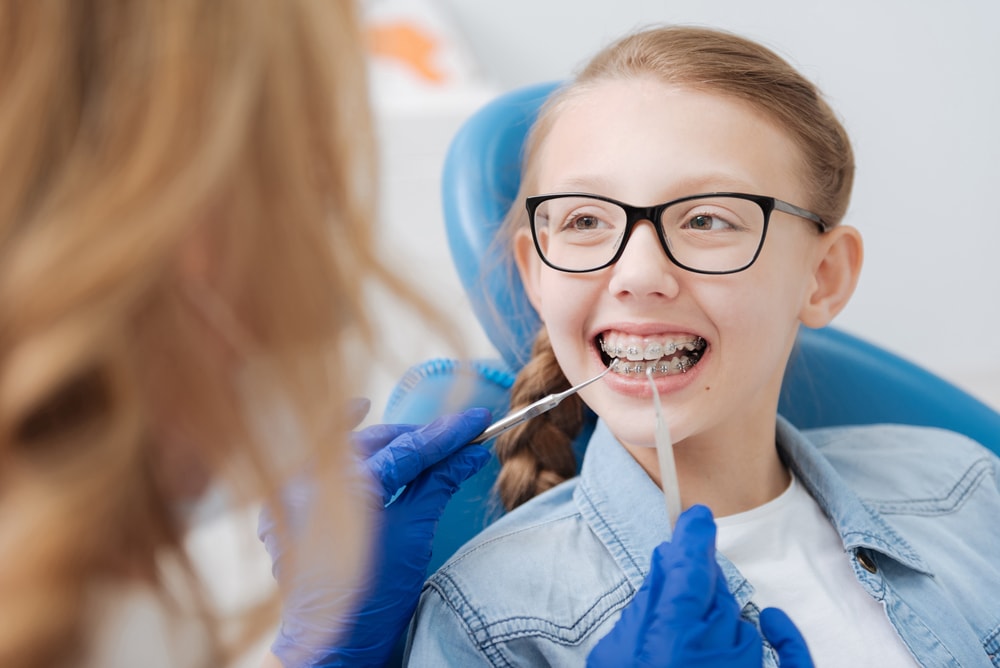Little Known Facts About Legacy Orthodontics.
Wiki Article
Not known Incorrect Statements About Legacy Orthodontics
Table of ContentsThe Facts About Legacy Orthodontics UncoveredAn Unbiased View of Legacy OrthodonticsFascination About Legacy OrthodonticsGetting The Legacy Orthodontics To WorkWhat Does Legacy Orthodontics Mean?
In enhancement, we provide flexible therapy schedules, versatile payment alternatives and an enjoyable, enjoyable experience.An orthodontist is a dental practitioner trained to detect, prevent, and deal with teeth and jaw irregularities. Orthodontists work with people of all ages, from youngsters to adults.
Malocclusion, or misaligned teeth, can cause oral problems, including dental caries, gum condition, and tough or painful chewing. However not everyone is born with straight teeth. If you have a bad bite or huge areas between your teeth, you may intend to consult a dentist focusing on orthodontic treatment.
7 Simple Techniques For Legacy Orthodontics
( Photo Credit: DigitalVision/Getty Images) Orthodontists use repaired and detachable dental devices, like braces, retainers, and bands, to change the position of teeth in your mouth. Orthodontic treatment is for dental abnormalities, including: Misaligned teethBite issues, like an overbite or an underbiteCrowded teeth or teeth that are as well far apartJaw misalignmentThe goal of orthodontic treatment is to boost your bite.While you may believe of orthodontists as generally for youngsters or young adults who require dental braces, they can correct dental issues at any type of age. Orthodontists go to college, dental college, and orthodontic college.
All orthodontists are dental practitioners, but not all dental practitioners are orthodontists. Orthodontic residency programs provide extensive, concentrated direction for oral experts. They concentrate on two areas: Just how to effectively and securely relocate teeth Exactly how to properly guide development in the teeth, jaw, and faceOnce an orthodontist has actually finished training, they have the choice to become board accredited.
Legacy Orthodontics Things To Know Before You Buy
Misalignment, or malocclusion, is one of the most common factor individuals see an orthodontist. It is hereditary and is the outcome of size differences in between the top and lower jaw or in between the jaw and teeth. Malocclusion results in tooth congestion, a misshapen jaw, or irregular bite patterns. Malocclusion is generally treated with: Your orthodontist attaches steel, ceramic, or plastic square bonds to your teeth.If you have just small malocclusion, you may have the ability to utilize clear dental braces, called aligners, as opposed to typical braces (https://telegra.ph/Transform-Your-Smile-with-a-Leesburg-Orthodontist-09-30). Some individuals require a headwear to help move teeth into line with pressure from outside the mouth. After dental braces or aligners, you'll need to use a retainer. A retainer is a custom tool that maintains your teeth in place.
They're most commonly used on children. They can develop added space in the mouth without needing to draw teeth. If you have a serious underbite or overbite, you could require orthognathic surgery (additionally called orthodontic surgery) to lengthen or shorten your jaw. Orthodontists use cables, medical screws, or plates to sustain your jaw bone.
You might need to see an orthodontist if you have: Crowding or not sufficient space for all of your teethOverbite, when your upper teeth come over your bottom teethUnderbite, when your bottom teeth are as well much forwardSpacing or issues with gapsCrossbite, which is when your upper teeth fit behind your base teeth when your mouth is closedOpen bite or a vertical gap between your front bottom and upper teethMisplaced midline, when the center of your bottom and top teeth do not align Fixing a dental malocclusion can: Make attacking, chewing, and speaking easierImprove the balance of our face and your general appearanceEase discomfort from temporomandibular joint problemsDifferent your teeth and make them less complicated to clean, helping protect against dental caries or cavities It's commonly a dental professional that first notices misaligned teeth throughout a regular examination.
The Best Guide To Legacy Orthodontics

Throughout your initial orthodontic examination, you'll likely have: A dental examPhotos taken of your face and smileDental X-raysPanoramic (360 degree) X-rays of your face and headImpressions to create mold and mildews of your teethThese tests will assist your orthodontist understand how to wage your treatment. leesburg braces. An orthodontist is a dental practitioner who's had training to treat your teeth and jaw
An orthodontist is focused on your bite, so something like a chipped tooth would certainly be managed by a dental professional. Orthodontists are concentrated on your bite, or the means your teeth fit with each other, and the straightness of your teeth. Ever questioned how stars always appear to have completely lined up teeth? The solution usually lies in the skilled hands of an orthodontist. What exactly does an orthodontist do? Orthodontists are dental professionals who focus on remedying irregularities in the teeth and jaws. Their expertise goes beyond simply creating a lovely smile; it includes enhancing your total oral wellness and function.
Legacy Orthodontics Things To Know Before You Get This

, orthodontists have a diverse toolkit at their disposal. These tried-and-true braces utilize a system of braces adhered to the teeth and linked by wires.
Clear aligners, like Invisalign, are a popular option for clients seeking a much more discreet therapy alternative. These detachable trays are custom-made to considerably change the teeth's setting. Headgear might be made use of along with dental braces or aligners to apply extra targeted forces, particularly for correcting jaw discrepancies. In cases of narrow jaws, palatal look at this website expanders can be used to create room for proper tooth placement.
Report this wiki page